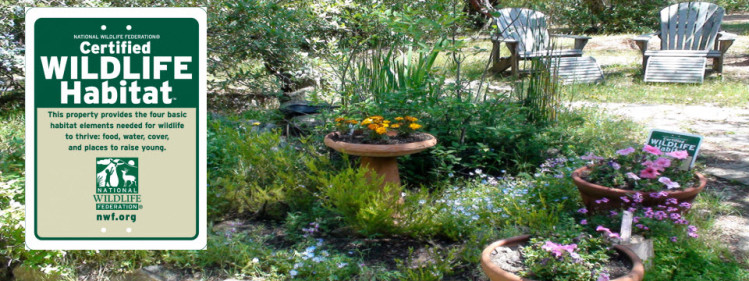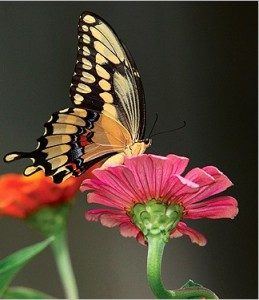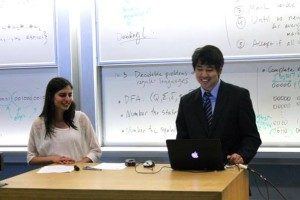
Environmental science student study informs efforts to transform outdoor spaces into native plant-based, chemical-free, nature-friendly habitats

Monarch butterflies navigating front yards populated with milkweed plants. Bumblebees and hummingbirds pollinating flowers in an office rooftop garden. Celebrating and protecting the natural world can be accomplished by creating neighborhoods and cities dedicated to greener practices that let people, plants, and animals thrive.
The National Wildlife Federation (NWF), a nationwide constituency that supports conservation, runs the Certified Wildlife Habitat (CWH) program to encourage people to apply more sustainable and wildlife-friendly practices in residential and commercial spaces. To earn this designation, properties must offer basic habitat elements (provide food, supply water, create cover, and give wildlife a place to raise young) and meet sustainable landscaping practices.
As part of the Institute of the Environment and Sustainability’s Practicum in Environmental Science, NWF worked with a group of undergraduate students to gauge the value of the existing program and determine if improvements might be needed to better demonstrate the benefits to both conservation and sustainability efforts. The nonprofit organization tasked the team of students with researching how well the current version of the program attracts wildlife, promotes sustainable practices, and increases the awareness of the benefits of these practices and presence of wildlife to people in California.
NWF’s California Director Beth Pratt-Bergstrom said the Institute was an ideal partner for this project. “IoES focuses on many of the areas NWF wanted to study: conservation, climate change, and sustainability. We knew the students would come with a good background in the subject matter and be schooled in the scientifically rigorous method needed for verifiable results.”
 Environmental science seniors Jennifer M. Chan, Terry H. Chen, Yuxin Jin, Nicole M. Tachiki, Sara L. Vetter, Megan L. Vyenielo, and Gina Y. Zheng employed three different methods of assessment on CWH properties: a survey, analysis of tree cover using remotely sensed imagery, and case studies. Based on the results of the surveys and CWH property assessments, the team compiled a set of recommendations for the NWF.
Environmental science seniors Jennifer M. Chan, Terry H. Chen, Yuxin Jin, Nicole M. Tachiki, Sara L. Vetter, Megan L. Vyenielo, and Gina Y. Zheng employed three different methods of assessment on CWH properties: a survey, analysis of tree cover using remotely sensed imagery, and case studies. Based on the results of the surveys and CWH property assessments, the team compiled a set of recommendations for the NWF.
The recommendations ranged from marketing strategies, what populations the NWF might focus on for outreach, and what locations could be targeted for the CWH program. The team documented their findings in a report, Evaluating Certified Wildlife Habitats and the Minds Behind Them.
Pratt-Bergstrom said the Federation loved working with the Environmental science majors. “The students took a vested interest in the program, and went beyond simply answering a research question. They helped shaped the research parameters and made the study more effective.”
Program highlights show that NWF Certified Wildlife Habitats have on average almost 50 percent more tree coverage than non-certified locations. Extra tree coverage is an ecosystem benefit as it decreases surface heat, increases soil water retention, prevents erosion, provides stable habitats, and reduces urban sound pollution.
On average, owners additionally report that about 40 percent of the plants in their CWH are native, with close to 27 percent of plants non-native but climate adapted. Pratt-Bergstrom noted the high tendency to plant natives helps with water conservation — an important advantage during the state’s prolonged drought.
Of particular significance was the discovery that properties that contain a NWF Certified Wildlife Habitat sequester over 800 metric tons of primary greenhouse gas CO2 annually more than a non-certified neighbor. Lowering carbon dioxide emissions is a crucial way to slow down climate disruption.
“If even 10 percent of Los Angeles residents created a Certified Wildlife Habitat, that’s over a 300 million metric ton reduction,” stated Pratt-Bergstrom.
“The students should be really proud — they helped improve a program that has far-reaching implications for citizen science and conservation. They are the environmental leaders of the future and their dedication really showed in how they pursued their work,” she said.
